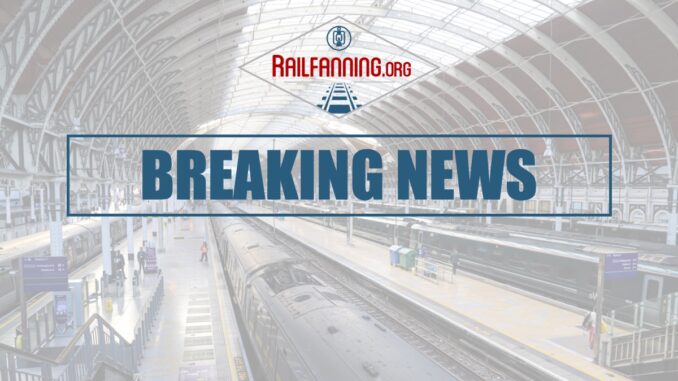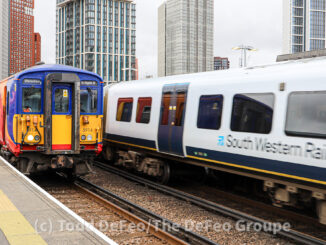
A Rail Accident Investigation Branch investigation will seek to identify the events that led to a collision between passenger trains near Talerddig, Powys, in Wales on Oct. 21.
On Monday, Oct. 21, at around 7:26 p.m., train 1J25, the 6:31 p.m. Transport for Wales passenger service from Shrewsbury to Aberystwyth, collided with train 1S71, the 19:09 Machynlleth to Shrewsbury passenger service, also operated by Transport for Wales.
The collision occurred on Network Rail’s Cambrian line, approximately 900 meters west of the passing loop at Talerddig, Powys. One passenger died, and four other people were seriously injured. Eleven more people sustained injuries that required hospital treatment. Neither train derailed in the collision, although significant damage was caused to the leading vehicles of both trains.
Both trains involved in the accident were two-car class 158 diesel multiple units.
There is conflicting evidence relating to the speed of the trains at the point of collision. Initial analysis indicates that train 1J25 was traveling between 15 mph and 24 mph, while train 1S71 was traveling at around 6 mph in the opposite direction. RAIB continues to analyze evidence relating to the collision speed, which remains an area of the ongoing investigation.
Following the accident, RAIB measured wheel/rail adhesion levels at various locations from the approach to the Talerddig loop to the point of collision. These found levels of wheel/rail adhesion that were low.
An inspection of the automatic sanding system fitted to train 1J25 after the accident showed that the sanding hoses on the leading vehicle of this train (which would have been active at the time of the accident) were blocked and unable to discharge sand.
The Rail Accident Investigation Branch investigation will seek to identify the sequence of events that led to the Oct. 21 collision, considering:
- The actions of those involved and any factors that may have influenced them
- The level of wheel/rail adhesion present from the approach to Talerddig loop to the point of collision
- The status and performance of the braking, wheel slide protection and sanding systems on train 1J25
- The behavior of both trains during and following the collision
- Transport for Wales’ policies relating to low wheel/rail adhesion and how it managed the risk of low adhesion on the Cambrian line
- Network Rail’s policies relating to low wheel/rail adhesion and how it managed the risk of low adhesion on the Cambrian line
- The processes used to assess and control the risk of overrun on the Cambrian line
- Any relevant underlying factors, including any actions taken in response to previous relevant safety recommendations




